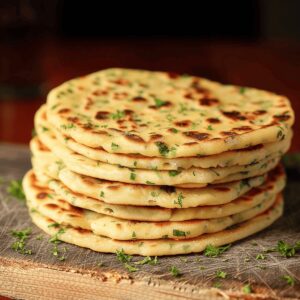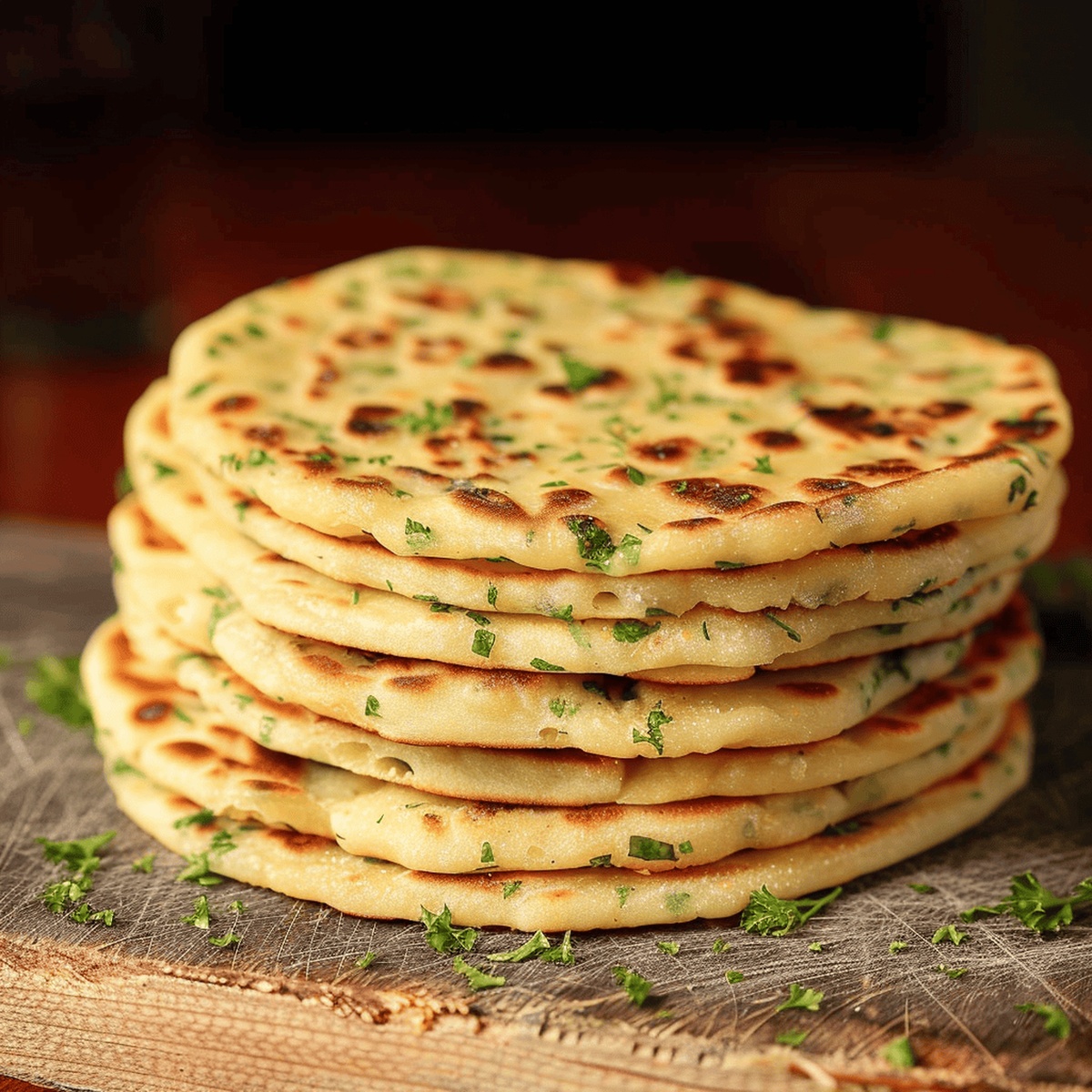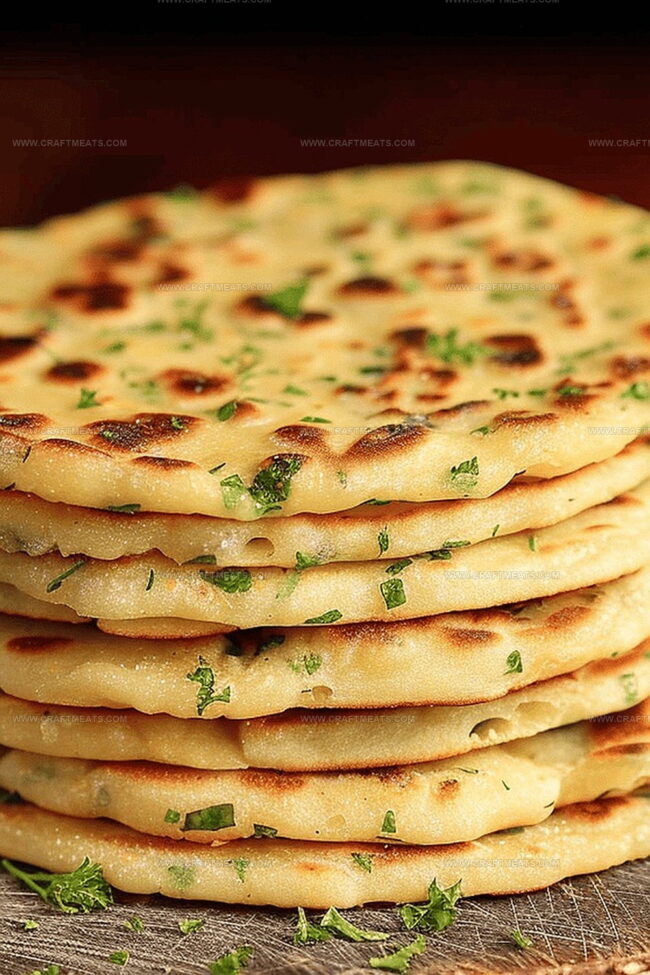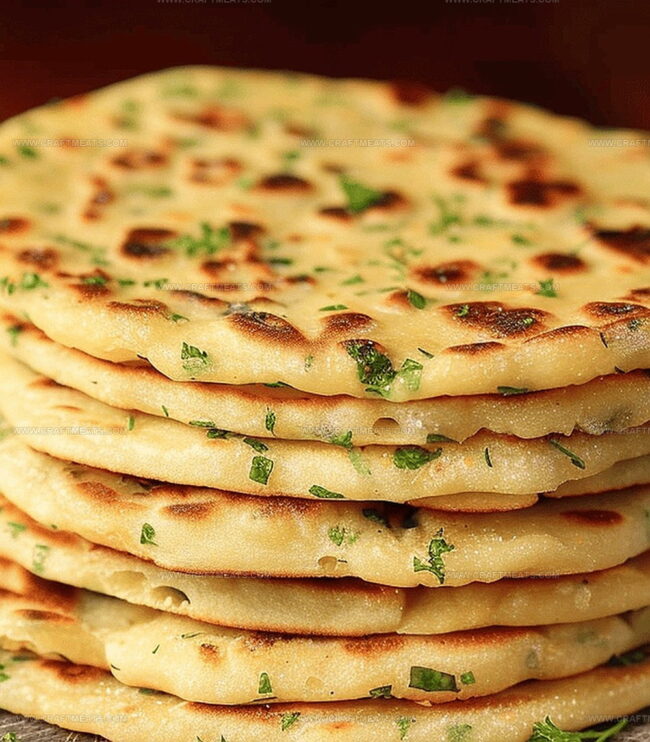Fluffy Greek Yogurt Turkish Flatbread (Bazlama) Recipe
Creamy Greek yogurt revolutionizes ordinary flatbread into a culinary masterpiece that tantalizes taste buds with its unique texture and robust flavor profile.
Soft, pillowy, and remarkably versatile, this traditional bread connects generations through its simple yet sophisticated preparation.
Mediterranean kitchens have long celebrated this remarkable combination of ingredients that elevate basic dough into something extraordinary.
Smooth yogurt acts as a secret weapon, creating incredible tenderness and subtle tanginess that distinguish this flatbread from standard recipes.
Remarkable fermentation processes contribute complex depth, making each bite a delightful journey through cultural cooking traditions.
Skilled bakers understand how carefully balanced moisture and precise techniques guarantee perfect results every single time.
Warm, fresh (bazlama) beckons with irresistible aromas that promise comfort and satisfaction.
Why Greek Yogurt Turkish Flatbread (Bazlama) Is Soft, Simple, and Satisfying
Ingredients for Greek Yogurt Turkish Flatbread (Bazlama)
Liquid Ingredients:Dry Ingredients:Herb and Yeast:How to Make Turkish Bazlama with Greek Yogurt
Step 1: Awaken The Yeast
Grab a cozy bowl and pour warm water. Sprinkle yeast and sugar into the water. Stir gently and let it sit in a warm spot for 10 minutes until tiny bubbles dance and foam appears.
Ingredients:Step 2: Create Creamy Mixture
Whisk Greek yogurt, olive oil, and salt into the yeast mixture until everything blends smoothly.
Ingredients:Step 3: Build The Soft Dough
Add flour and fresh parsley to the creamy mixture. Stir with a wooden spoon until dough starts forming. Transfer to a floured surface and knead for 4 minutes. The dough should feel smooth and bounce back when touched.
Step 4: Prepare Dough Portions
Divide the dough into 10 equal pieces. Dust each piece lightly with flour and cover with a soft kitchen towel. Let them rest for 15 minutes.
Step 5: Craft Golden Flatbreads
Heat a medium pan over medium-low flame. Roll out one dough portion into a circular shape. Brush with olive oil. Place in the pan and cook until golden bubbles form, about 1-2 minutes.
Step 6: Perfect The Cooking
Flip the flatbread and cook the other side for 1-2 minutes. Watch for golden spots. Repeat with remaining dough portions.
Step 7: Serve And Store
Sprinkle extra parsley if desired. Stack flatbreads in a clean towel to keep them soft and warm.
Step 8: Preserve Your Creation
Store cooled flatbreads in a sealed bag. Reheat in a pan or microwave when ready to enjoy.
Tips for Fluffy, Golden Turkish Flatbread
Storing and Reheating Bazlama Without Losing Softness
What Pairs Perfectly with Greek Yogurt Bazlama
Bazlama Variations That’ll Keep You Coming Back
Print
Greek Yogurt Turkish Flatbread (Bazlama) Recipe
- Total Time: 35 minutes
- Yield: 4 1x
Description
Bazlama brings creamy Greek yogurt and traditional Turkish bread together in one irresistible flatbread. Warm, pillowy layers emerge from simple ingredients, inviting you to savor authentic Mediterranean comfort with each delicious bite.
Ingredients
Main Ingredients:
- 3.75 cups all-purpose flour
- 0.75 cup Greek-style yogurt
- 1.25 cups warm water (105-110˚F)
Leavening and Sweetening:
- 2.25 teaspoons active dried yeast (1 packet)
- 1 tablespoon sugar
Seasoning and Finishing Ingredients:
- 2 tablespoons extra virgin olive oil
- 2 teaspoons kosher salt
- 0.25 cup finely chopped flat leaf parsley
Instructions
- Awaken the yeast by dissolving it with sugar in warm water, allowing the mixture to froth and bloom for 5-10 minutes in a cozy environment.
- Incorporate Greek yogurt, olive oil, and salt into the activated yeast, whisking until thoroughly integrated.
- Gently fold flour and chopped parsley into the liquid mixture, transitioning from a wet blend to a cohesive dough using a wooden spoon or sturdy spatula.
- Transfer the nascent dough onto a generously floured surface, kneading methodically for 3-4 minutes until achieving a silky, elastic texture that rebounds when gently pressed.
- Partition the dough into 10 uniform segments, dusting each with a light flour veil and sheltering them beneath a pristine kitchen towel to relax for 15 minutes.
- Warm a medium sauté pan over moderate heat, then transform each dough portion into a 7-inch circular canvas by rolling carefully.
- Delicately brush the dough’s surface with olive oil, then place it oil-side down in the heated pan, immediately brushing the exposed side with additional oil.
- Monitor the flatbread’s transformation, watching for effervescent bubbles and golden-kissed undersides during 1-1.5 minutes of cooking.
- Execute a precise flip, allowing the reverse side to develop enticing golden speckles for 60-90 seconds, maintaining vigilance to prevent scorching.
- Conclude each flatbread with an optional sprinkle of fresh parsley, then nestle the warm rounds within a soft kitchen towel to preserve their tender character.
- Once cooled, preserve the flatbreads in an airtight bag, ready to be revived by gentle reheating in a skillet or microwave when desired.
Notes
- Activated yeast transforms warm water into a bubbly, frothy mixture ready for dough magic.
- Greek yogurt adds creamy tanginess and helps create a soft, pillowy texture in the flatbread.
- Kneading develops gluten, ensuring the bread’s satisfying chew and perfect elastic consistency.
- Prep Time: 20 minutes
- Cook Time: 15 minutes
- Category: Breakfast, Snacks
- Method: Sautéing
- Cuisine: Turkish
Nutrition
- Serving Size: 4
- Calories: 250
- Sugar: 1 g
- Sodium: 300 mg
- Fat: 6 g
- Saturated Fat: 1 g
- Unsaturated Fat: 5 g
- Trans Fat: 0 g
- Carbohydrates: 43 g
- Fiber: 2 g
- Protein: 8 g
- Cholesterol: 5 mg




Isabella Rossi
Founder & Culinary Content Creator
Expertise
Recipe Development, Traditional Irish and European Cuisines, Food Styling and Photography, Culinary Education
Education
Dublin Institute of Technology (DIT) – School of Culinary Arts and Food Technology
Ballymaloe Cookery School
Liam is the voice behind many of Craft Meats’ most flavorful features. With roots in Dublin’s smoky barbecue scene and a culinary degree from the Dublin Institute of Technology, he brings time-tested cooking techniques to life.
His training at Ballymaloe Cookery School sharpened his farm-to-table approach, giving him a deep respect for every ingredient he writes about.
He’s not about overcomplicating the process, just helping you cook meat that’s worth talking about. When he’s not writing or grilling, he’s out foraging or nerding out on regional spice blends to add to his next recipe.